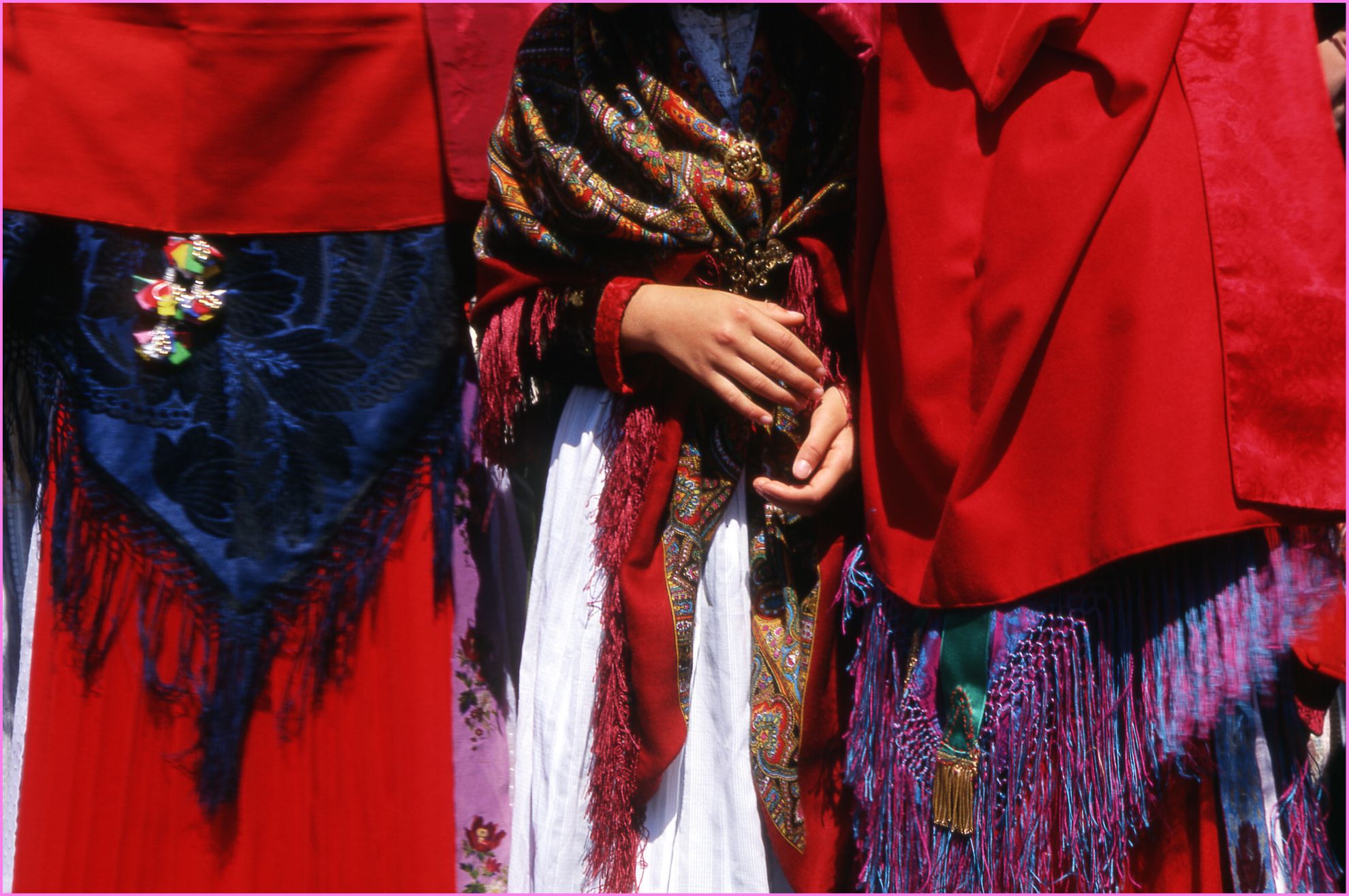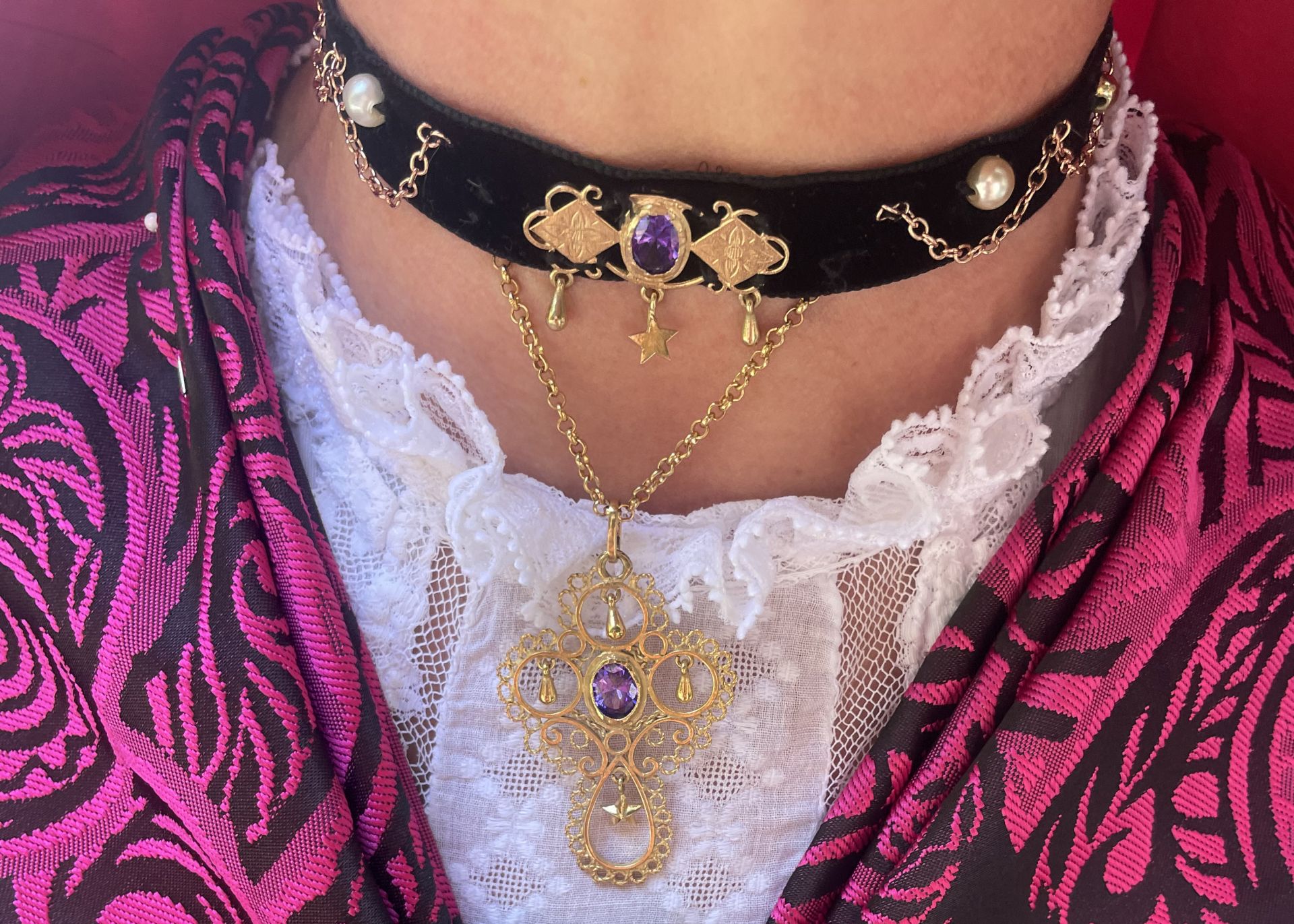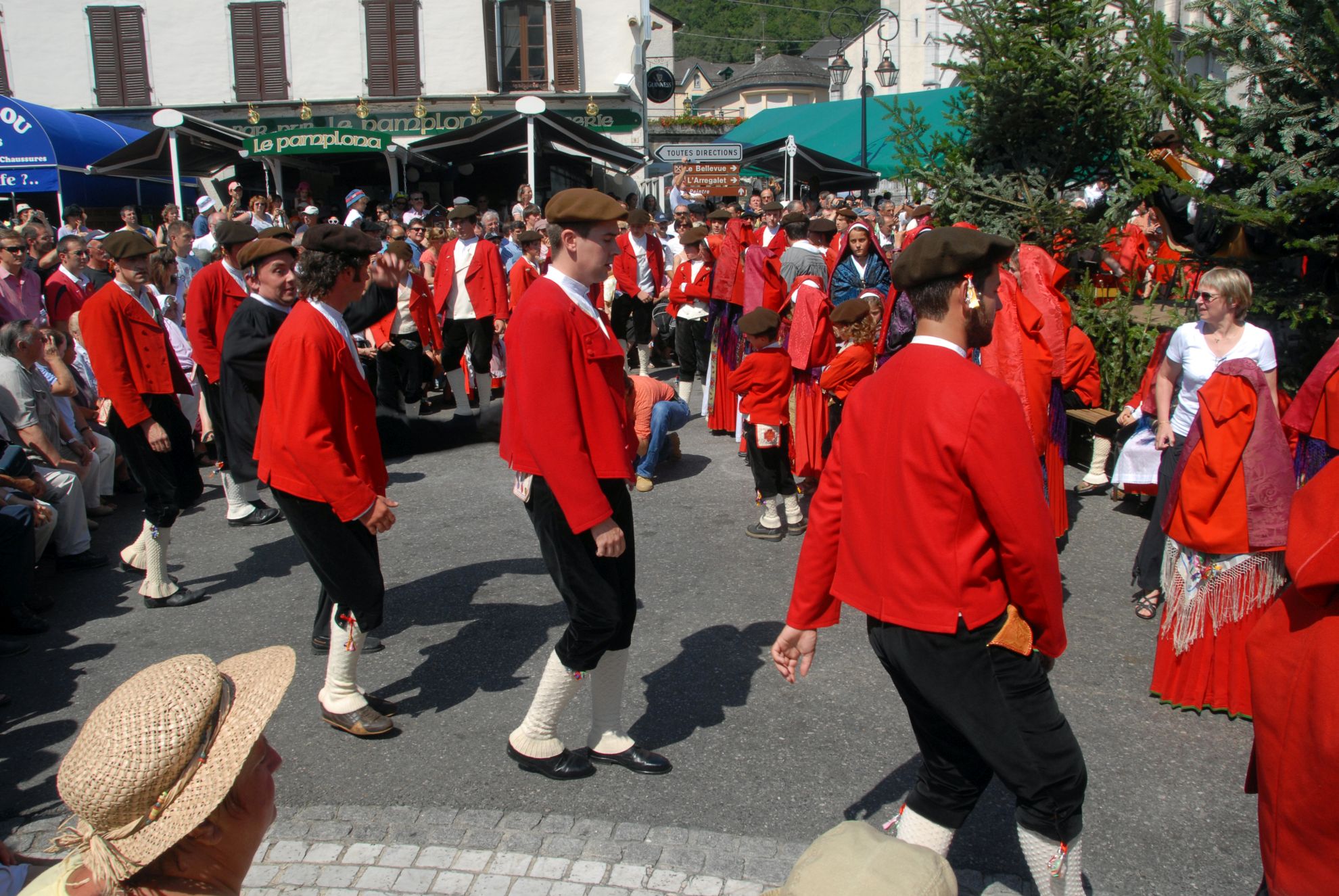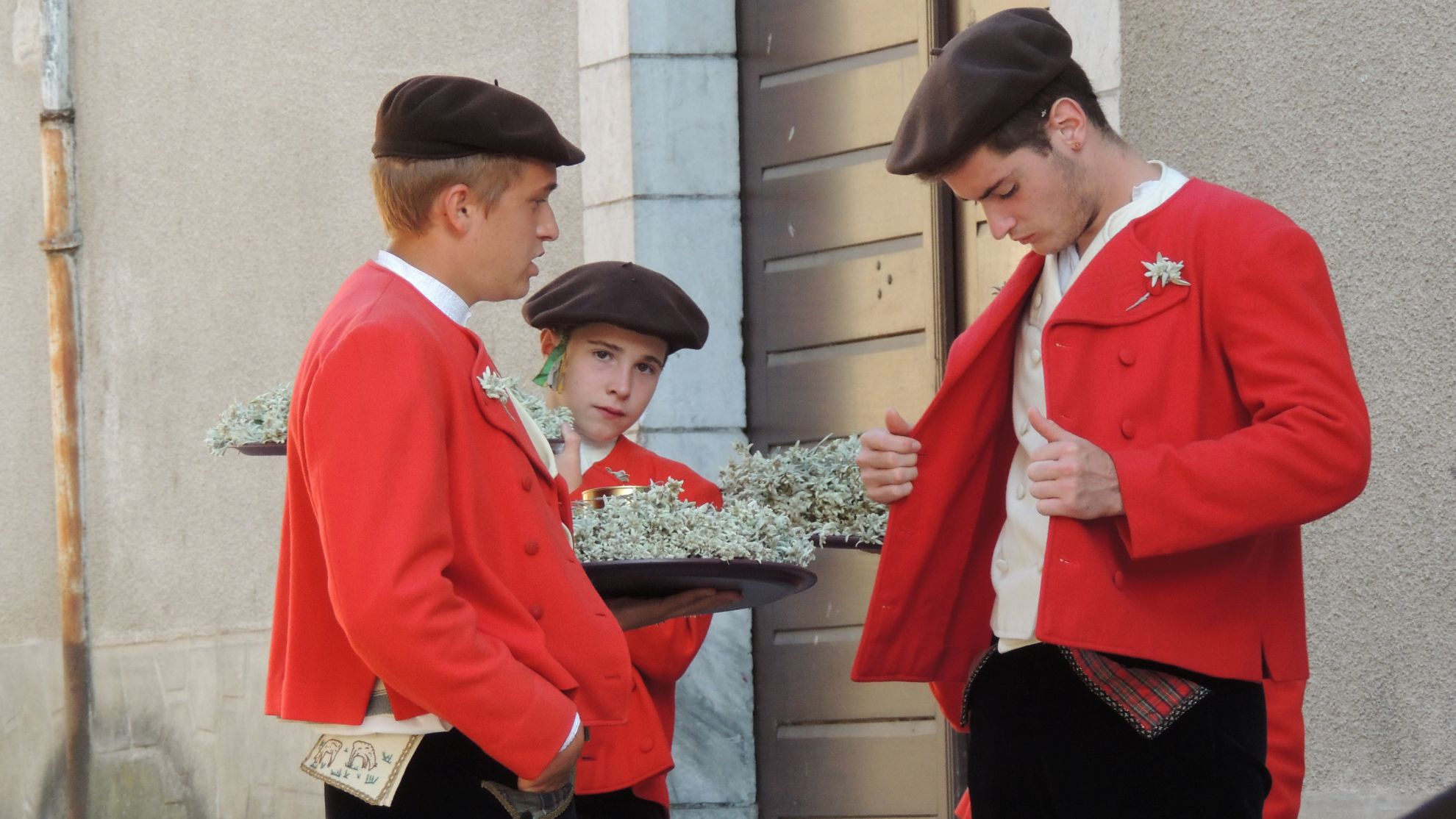The Ossalois costume, an important element of the tradition The costumes differ between the Béarn valleys. In Ossau, the traditional costume is very rich and colorful. It is renowned as one of the most beautiful and remarkable of the French Pyrenees. Over time, the costume continued to evolve according to local fashions and was - almost frozen - only from the end of the 19th century. Until the beginning of the 20th century, mainly in the peasant world, they were still commonly worn during patronal festivals, weddings (it was in 1945, in Laruns, that the last ossaloise married in traditional costume) and during certain religious holidays (processions).
Today, they are worn only for the patronal festivals of the villages of Haut Ossau.
The women’s costume
In the old days, women wore a red capulet on their heads. This one was made of linen or white wool the rest of the time.
This capulet was pinned to a round cup of muslin («the cohe»), itself tied to the neck of the ossaloise.
They also wore a jewel (most often gold) called «holy spirit» mounted on a choker in black velvet.
On their shoulders was placed a triangular shawl in silk or wool. This shawl with floral decorations and shimmering colors was taken in the belt of the bodice.
Lingerie is rudimentary: a linen shirt down to the knees, a marshmallow (often lace) and a petticoat («coutilhou») in wool, silk or cotton.
In winter, the women wrapped themselves in a black coat revealing «cohe» at the edge of the hair.
The grieving women wore a wool cape, long and pleated, white in color and embroidered with traditional patterns.
This one also had a row of tassels sewn on its lower part.
The women also wore two wool skirts, gathered in organ pipes («arrupes») down to the knees and an apron that they rarely left (sign of their peasant condition).
The workwear was a thick skirt made of blue or brown wool fabric.
Slippers, a kind of gaiters without feet, protected the calves of women. The lower part covering the hoof, called «gansoü», was crocheted by men when they kept their herds.
They slipped their feet in wooden clogs - sometimes carved - and covered with leather on top («lous esclops»).The costume of men
To protect themselves from bad weather, the shepherds wore a brown beret, soft, knitted and felted wool. Worn for practical reasons, this headgear is obviously inherent to the Ossalois costume. For the feast days, it was decorated with golden tassels and pearls («lou floc»).
As lingerie, the men put on a pleated white shirt, buttoned at the neck. Linen for dress and coarse canvas for everyday clothing.
Above, a white vest with wide lapels was always buttoned. For work, the vest was long sleeves tight at the wrists, stopped at the waist and held by a martingale (half belt).
A red jacket was sported for the holidays. At the time of hydrotherapy and the first tourists, mountain guides also wore this red suit to be recognized.
A black velvet panty stopping at the knees lasted until the end of the 19th century before being replaced by pants.
A wide belt, of wool or red silk, which could measure more than two meters, kept men’s waist and kidneys warm.
In winter, the Ossalois wore a semi-circular cape, wide and sleeveless. Its role was to protect against bad weather, heat or freshness.
It was woven locally by some families. In brown or red bure cloth, it was then waterproofed in the crushing mills.
Like women, men also wore white or brown shoes.
At their feet, they sometimes wore «abarcos» (leather soles trimmed with hair and laced at the instep) but also hooves with pointed ends (tips can be used to remove mud or snow under the hooves).
Note that before the nineteenth century, it was common to walk barefoot even in the mountains..The children’s costume
The infants were trapped in the “stuffing”, consisting of several layers of fabric sewn together. This was unhygienic.
At first, the girls were already wearing a cap with a silk cap on their heads, bordered by a wide red ribbon.
The girls also wore a shawl on the dress and apron, until the age of first communion. The capulet is worn for the first time upon confirmation.
The boys also wore the dress up to 5 years and a six-part cap (three for the girls).


